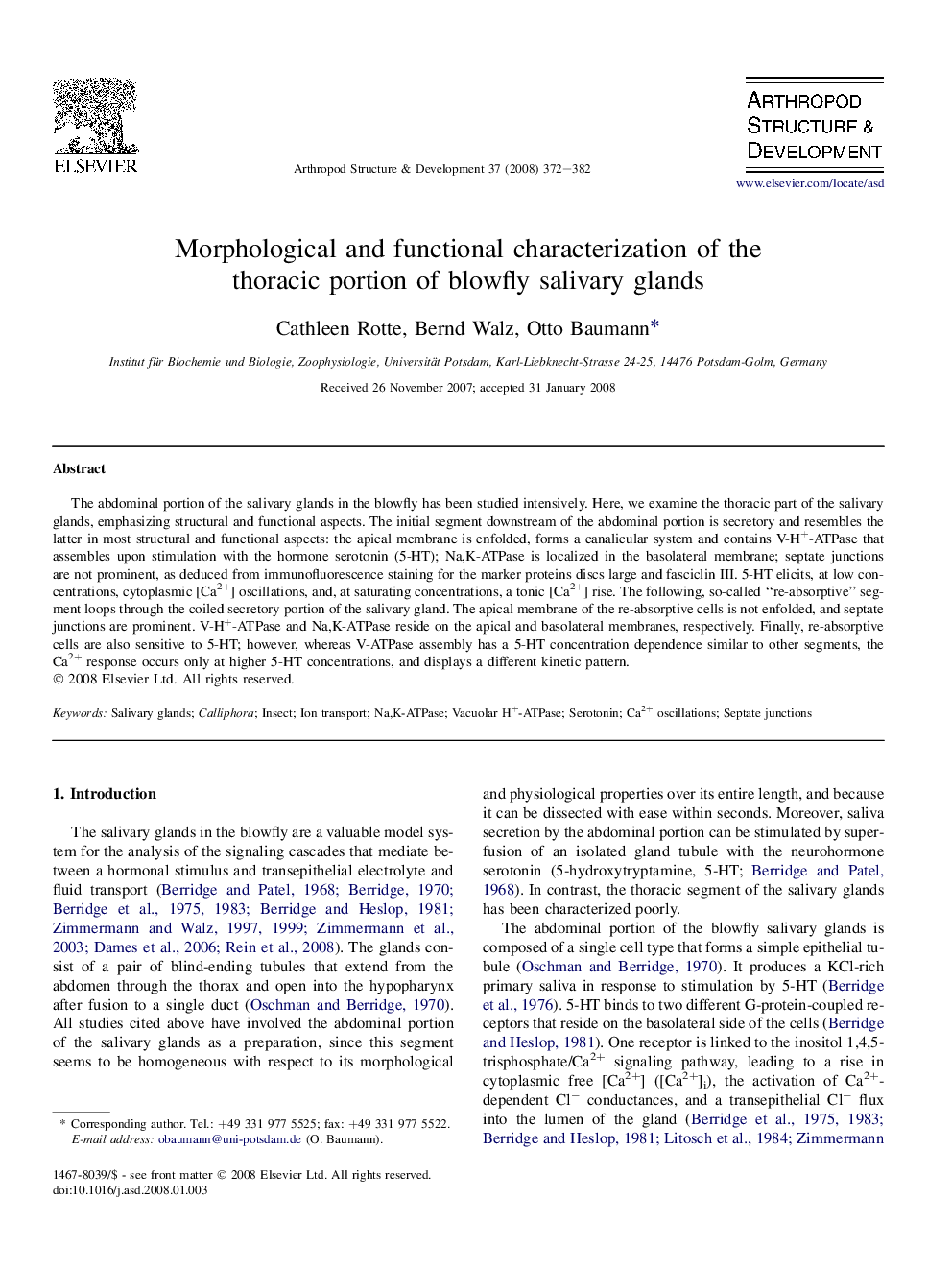| Article ID | Journal | Published Year | Pages | File Type |
|---|---|---|---|---|
| 2778849 | Arthropod Structure & Development | 2008 | 11 Pages |
The abdominal portion of the salivary glands in the blowfly has been studied intensively. Here, we examine the thoracic part of the salivary glands, emphasizing structural and functional aspects. The initial segment downstream of the abdominal portion is secretory and resembles the latter in most structural and functional aspects: the apical membrane is enfolded, forms a canalicular system and contains V-H+-ATPase that assembles upon stimulation with the hormone serotonin (5-HT); Na,K-ATPase is localized in the basolateral membrane; septate junctions are not prominent, as deduced from immunofluorescence staining for the marker proteins discs large and fasciclin III. 5-HT elicits, at low concentrations, cytoplasmic [Ca2+] oscillations, and, at saturating concentrations, a tonic [Ca2+] rise. The following, so-called “re-absorptive” segment loops through the coiled secretory portion of the salivary gland. The apical membrane of the re-absorptive cells is not enfolded, and septate junctions are prominent. V-H+-ATPase and Na,K-ATPase reside on the apical and basolateral membranes, respectively. Finally, re-absorptive cells are also sensitive to 5-HT; however, whereas V-ATPase assembly has a 5-HT concentration dependence similar to other segments, the Ca2+ response occurs only at higher 5-HT concentrations, and displays a different kinetic pattern.
